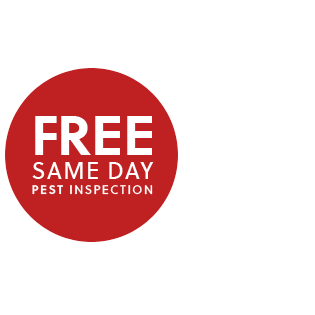Last Updated: October 22, 2025
The short answer: your bathroom provides the three things pests need most: water, food, and shelter.
It’s a constantly humid environment with plenty of moisture from pipes, drains, and showers, plus food sources like hair, soap scum, and mold. This makes it a perfect hotspot for pests like silverfish, cockroaches, and ants.
What Kinds of Bugs Are Common in California Bathrooms?
You’re most likely to find pests that thrive in high humidity. Our technicians most often find:
- Silverfish: These small, wingless, silver-gray insects are the most common bathroom pest. They are attracted to mold and dampness and feed on soap scum, hair, and even the glue in wallpaper.
- Cockroaches: Species like the German cockroach are drawn to the warmth and moisture of bathroom pipes and drains. You can learn more about them in our cockroach glossary. They are nocturnal and excellent at hiding in tiny crevices.
- Ants: Tiny ants, especially Pharaoh ants, will build nests in warm, humid wall voids or under floors, seeking out water from sinks and showers.
- Spiders: While not drawn to moisture, spiders follow their food. A bathroom with other small bugs is a perfect hunting ground for house spiders.
- Drain Flies: These small, fuzzy flies look like tiny moths. They breed in the organic buildup inside your sink and shower drains.
How Can I Get Rid of Bathroom Bugs? (A 7-Step Guide)
You can make your bathroom far less inviting by removing the sources of water, food, and shelter.
1. Eliminate All Excess Moisture
This is the most important step. Pests are drawn to water, so cut off the supply. Inspect under sinks, around the toilet base, and at faucet connections for any slow drips or leaks and repair them immediately.
2. Improve Ventilation to Reduce Humidity
Bugs love humidity. Always use your bathroom's exhaust fan while showering and leave it running for 20-30 minutes afterward to vent steam. If you don't have a fan, open a window or use a small dehumidifier.
3. Deep Clean to Remove Food Sources
Don't let pests feast. Regularly scrub the shower, tub, and sinks to remove soap scum. Mop the floors, and be sure to clean the area behind the toilet. Wash bathmats and shower curtains often, as they can harbor mold and mildew, a favorite food for silverfish.
4. Clear and Cover Drains
Drains are a primary highway and breeding ground. Use a drain cleaner (or a mix of baking soda and vinegar) to clear out hair and organic gunk. When not in use, consider using a simple drain cover or plug.
5. Seal All Cracks and Entry Points
Pests can get in through the tiniest openings. Use silicone caulk to seal gaps around pipes, in corners, between the tub and wall, and in any cracked tiles. Check that window screens are in good repair and add a door sweep to block the gap under the door.
6. Reduce Clutter and Hiding Spots
Piles of damp towels, stacks of old magazines, or cluttered cabinets are perfect hiding places. Store items in sealed plastic containers rather than cardboard (which pests eat) and only keep essentials in the room.
7. Use Bathroom-Safe Traps
For monitoring a problem, sticky traps placed under the sink or behind the toilet can be very effective at catching crawling insects and helping you identify what you're dealing with.
When to Call a Professional
If you've cleaned, sealed, and reduced moisture but still see pests, you may have a hidden nest or a larger infestation. Seeing pests during the day (especially cockroaches) is a strong sign of a significant problem.
A Clark Pest Control technician can identify the specific pest, find the source of the infestation (like a nest in a wall void), and apply targeted, family-safe treatments to solve the problem for good.
Ready for a pest-free bathroom? Call us today at (800) 882-0374 or
request your free inspection.


